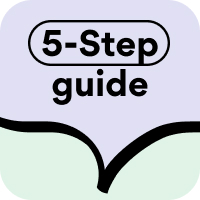The Ultimate SaaS Conferences Calendar!
Join today and pay no transaction fees for 60 days.
4 Ways SaaS Startups Can Preserve Runway and Manage Monthly Burn Rate in the Downturn

In the startup world, runway refers to how many months your business can keep operating before it’s out of money. For instance, if a business with no revenue is spending $5,000 per month and has $25,000 in the bank, it has a “runway” of five months.
The net burn rate is the rate you’re losing money at, it measures the difference between cash out and cash in. If you run a profitable company, you have a negative net burn rate each year because your business brings in more than it “burns”. And that’s your ultimate goal.

Freebie
5-Step Guide on Revenue Growth for Bootstrapped & Seed Stage Startups in 2023
What is a good amount of runway?
Most SaaS startups depend on the fundraising rounds and startup runway recommendations are based on the average time between fundraising stages. Analytics recommends having 18 months of runway for early-stage startups and up to 35 months for cautious founders. Runway depends on factors like your growth strategy, team, product, and more.
Professional investors say that the runway “red zone” begins at three months. Now, during the downturn, many startups are pushed into the red zone. But there are lots of strategies startups can use to stay afloat and preserve runway while managing monthly burn rate.
What are the 4 ways to preserve your startup runway and manage monthly burn rate in the times of crisis?
1. Examine, cut, and spread your costs
Cut unnecessary operating costs, re-evaluate your rent and payroll, create a specific corporate card policy, use real-time expense tracking software, accounting software, or both to monitor spending.
- Payroll tricks: reduce your payroll by offering your employees the stock options. The ones who believe in your company will sacrifice 10–15% of their salary to stock options and this will add up to a round sum for 12 months as well.
- If you are an early stage startup use personal meetings scheduling accounts instead of paid ones. Purchase email licenses only for those employees that are in direct touch with the customers. If you cut these tiny little expenses it will be added up to nice savings in 12 months!
- Reduce your SaaS spend with the Buy Now, Pay Later (BNPL) payment method when purchasing necessary products or services that you can’t give up on, or explore options like Spendflo that focuses on saving you 30%+ on your SaaS spend. BNPL allows you to buy annual subscriptions to services you need to keep your business running with a considerable discount while you still can pay month-to-month. Negotiate with a seller a possibility to integrate this solution. It only takes a couple of hours to integrate this payment method so you both can enjoy all the benefits. Let them know all the perks they can enjoy when partnering up with the B2B BNPL service providers. It’s definitely a Win-Win option!
2. Work hard on increasing sales
Test more hypotheses and come up with creative ways to generate more sales and maximize your return on investment (ROI) without raising costs. You could try different pricing strategies, upselling and cross-selling to current customers, etc. Below are other ways to enhance sales.
- Establish Relationships. Start building special relationships with your customers and carry such principles over into your sales department.
- Share Quality Content. Be visible to people searching for a solution you offer. SEO and SEM help improve this when supported by the content on your website.
- Establish Trust. While not so many of your customers are likely to be swayed by a celebrity endorsing your product, real customer testimonials and detailed case studies carry some weight.
3. Plan around the next year in order to improve your cash flow
Planning for the future will help you manage your cash flow.
- Having a separate expense account for overhead items helps with creating predictive models to get a good sense of probabilities.
- Offer Discounts for Early Payment. Everyone loves promo codes and discounts. Offer your customers to pay their bills ahead of time in exchange for an incentive. This creates a win-win situation.
- Plan to increase pricing. Increasing your prices is something that scares many founders. But it’s necessary in case unit economics says so and you want your business to stay afloat.
4. Make your money work for you
Making your money work for you means taking control of your finances, then using that control to continuously improve your financial stability and security. Investment tools can help with not losing the value of money due to inflation.
Short-term low risk investments: Bank deposits, REITs (real estate investment trust) — if you have a significant runway, explore short-term investment opportunities to make your capital work.
Prepare to take off
Use these four simple techniques to increase cash flow and reduce spending over time. While the theory might seem straightforward, the reality is more complicated. Founders must have a clear understanding of a company’s expenses and cash flow. Knowing how to control your cash flow is crucial to preserving runway and managing monthly burn rate in the downturn.
Let’s talk your revenue together

Amal Abdullaev
Co-founder at Comfi
Join our community of 2000+ revenue nerds
Stay updated on the latest industry trends, exclusive insights, and expert tips on maximizing revenue.
%202.png?alt=media&token=13969aaa-32cb-4a6e-a9ad-0ab937142910)